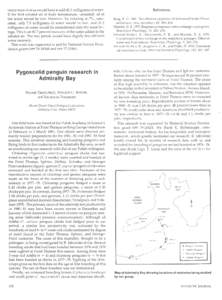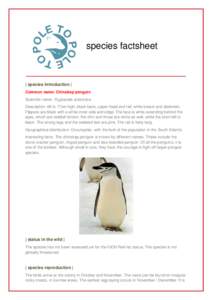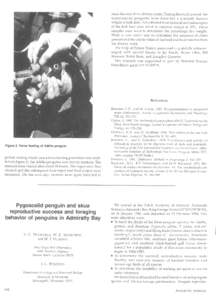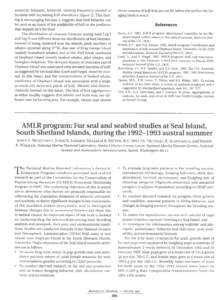<--- Back to Details
| First Page | Document Content | |
|---|---|---|
 Date: 2011-05-06 06:05:13Penguins Pygoscelis Zoology Birds of Australia Megafauna Chinstrap Penguin Gentoo Penguin Antarctic Peninsula Leopard seal Mammals of Australia Flightless birds Geography of Antarctica |
Add to Reading List |
 ratory tract of skua would have to add 45.0 milligrams of water. If the bird exhaled air at body temperature, saturated, all of the water would be lost. However, by exhaling at 7°C, saturated, only 7.8 milligrams of wat
ratory tract of skua would have to add 45.0 milligrams of water. If the bird exhaled air at body temperature, saturated, all of the water would be lost. However, by exhaling at 7°C, saturated, only 7.8 milligrams of wat


